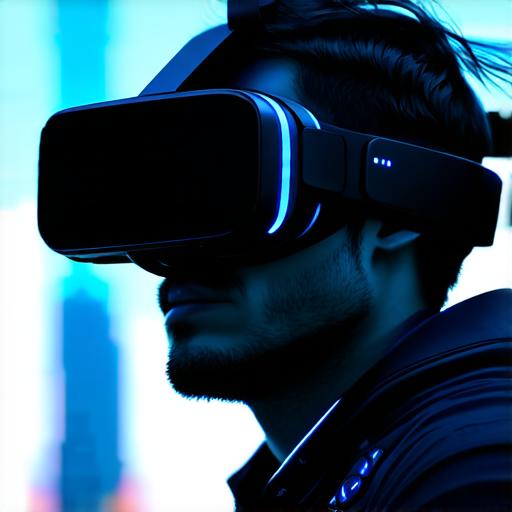Virtual reality (VR) technology has become increasingly popular as a way to create immersive and engaging experiences for users. However, it is not just users who can benefit from VR; developers can also use this technology to improve their productivity, collaboration, and user experience.
Increased Productivity
Virtual reality technology can help developers increase their productivity in several ways. Firstly, by allowing developers to visualize and interact with their projects in a more immersive way, VR can help them identify and fix problems much faster than traditional methods. For example, an architect working on a project can use VR to virtually walk through the building and identify any design flaws or issues that may not be visible from blueprints alone.
Secondly, virtual reality technology can also help developers work more efficiently by providing them with real-time feedback on their designs. For example, a video game developer working on a new level can use VR to test out different layouts and make adjustments in real-time based on user feedback.
Better Collaboration
Virtual reality technology can help developers collaborate better with their teams and clients. By allowing multiple users to interact in the same virtual space, VR can facilitate real-time communication and collaboration between developers, designers, and other stakeholders.
Additionally, virtual reality technology can also help developers showcase their work to clients and stakeholders in a more immersive and engaging way. For example, a developer working on a real estate project can use VR to create a virtual tour of the property for potential buyers or tenants.
Improved User Experience
Finally, virtual reality technology can help developers create more immersive and engaging experiences for users. By providing a fully immersive environment, VR can help developers create more realistic and believable simulations of the real world.
For example, a video game developer working on a new game can use VR to create a truly immersive gaming experience that transports players into the game world. This creates a unique and engaging experience for players and sets the game apart from others in the market.
Additionally, virtual reality technology can also help developers create more interactive and engaging experiences for users. By allowing users to interact with their environment in real-time, VR can help developers create more engaging and satisfying experiences for users.
For example, an educational application developer working on a new app can use VR to create a virtual field trip that allows students to explore different parts of the world in a fully immersive way. This not only creates an engaging experience but also helps students learn about different cultures and histories.
Real-Life Examples
One example of how virtual reality technology has benefited developers is in the field of architecture. Architects can use VR to create realistic simulations of their designs, allowing clients to see how a building will look and function before it’s even built. This not only saves time and money but also helps architects create more satisfied clients.
Another example is in the field of gaming. Virtual reality technology has revolutionized the way games are played and experienced, allowing developers to create truly immersive and engaging experiences for players. For example, the virtual reality game “Beat Saber” allows players to use VR controllers as light sabers to slash through blocks that represent music beats.
Conclusion
In conclusion, virtual reality technology offers several advantages for developers, including increased productivity, better collaboration, and improved user experience. By providing a fully immersive environment, VR can help developers create more realistic and believable simulations of the real world. Additionally, virtual reality technology can also help developers create more interactive and engaging experiences for users.

